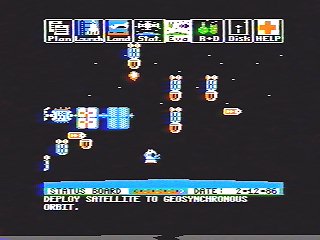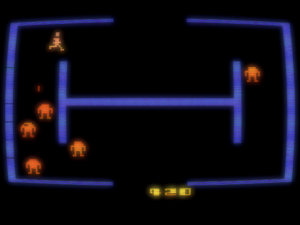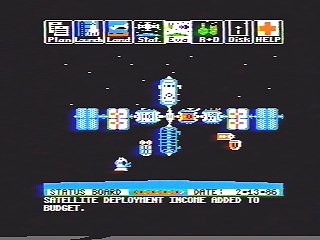 The Game: You are the administrator of NASA. Your goal? To launch the necessary components of a full-scale space station, assemble them in orbit, and initiate and maintain any number of commercial or medical research projects aboard your orbital laboratory. You will also be in charge of launching satellites for commercial and military clients. As fun as all of these activities may sound, they don’t come without a price tag. The cost for everything from necessary space hardware, to time spent in the planning stages, to launches and landings, to maintaining the bare essentials of survival in orbit, will reach into the billions of dollars…if you’re good at this game. (HESware, 1985)
The Game: You are the administrator of NASA. Your goal? To launch the necessary components of a full-scale space station, assemble them in orbit, and initiate and maintain any number of commercial or medical research projects aboard your orbital laboratory. You will also be in charge of launching satellites for commercial and military clients. As fun as all of these activities may sound, they don’t come without a price tag. The cost for everything from necessary space hardware, to time spent in the planning stages, to launches and landings, to maintaining the bare essentials of survival in orbit, will reach into the billions of dollars…if you’re good at this game. (HESware, 1985)
Memories: An incredibly fun and very complex game, Project Space Station is a SimCity-style simulation with elements that appeal to almost anyone, including arcade-style action screens. But there are also aspects of the game – such as the budgeting screen (left) – that can best be appreciated by older players.
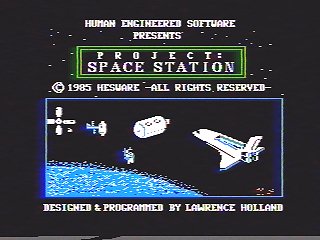 And while Project Space Station displayed a wonderful density and complexity for an Apple II computer game in the mid-80s, I think this game could be so much cooler now! A new version of Project Space Station could introduce new elements, such as public opinion (and therefore funding). Safety factors could also be included – to some extent, Project Space Station, released in 1985, displays its naivetè by including the space shuttle Challenger as the flagship of the player’s two-shuttle “fleet.”
And while Project Space Station displayed a wonderful density and complexity for an Apple II computer game in the mid-80s, I think this game could be so much cooler now! A new version of Project Space Station could introduce new elements, such as public opinion (and therefore funding). Safety factors could also be included – to some extent, Project Space Station, released in 1985, displays its naivetè by including the space shuttle Challenger as the flagship of the player’s two-shuttle “fleet.”
Project Space Station isn’t without its deadly serious challenges, however. A construction pod operator or an entire shuttle crew can run out of oxygen and die. While the shuttles and pods can eventually be used again once retrieved, losing valuable crew members can catch up with you eventually when you’re trying to staff a vital research project. A more 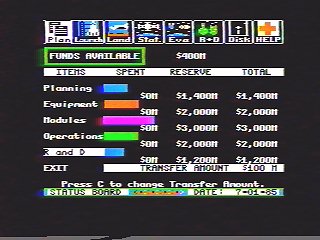 modernized version of Project Space Station could take this idea even further, with crew deaths costing the player valuable public opinion, insurance payouts, and much more. As morbid as it may sound, it would make for a more realistic simultation…perhaps too realistic.
modernized version of Project Space Station could take this idea even further, with crew deaths costing the player valuable public opinion, insurance payouts, and much more. As morbid as it may sound, it would make for a more realistic simultation…perhaps too realistic.
For those who still own Apple computers and this game, I offer a few tips. For starters, assemble the bare basics of the space station – crew module, emergency module, hangar module, power module – as early as possible. Get a crew of at least two people up there, with at least two construction pods, as early as the basics are completed. And on every flight to deliver components of the station, take at least one satellite and one payload assistance module, cargo weight permitting. By keeping a well-stocked “satellite farm” in orbit, along with a minimum crew to go outside and launch the birds on demand, you can scale back on shuttle launches a little bit, saving precious operations budget. It can take up to a year before station-based research projects can bear financial fruit, so satellite deployments are your bread and butter until then.
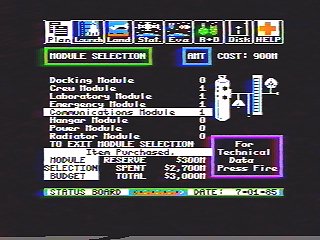 When you begin selecting astronauts, restrict the initial launches to a couple of shuttle pilots per launch. Don’t take up your entire budget keeping scientists and researchers on the payroll when they have no projects in progress to justify their existence.
When you begin selecting astronauts, restrict the initial launches to a couple of shuttle pilots per launch. Don’t take up your entire budget keeping scientists and researchers on the payroll when they have no projects in progress to justify their existence.
Place fuel tanks in orbit at least once every other “screen.” You’d be amazed how easy it is for a construction pod to run out of fuel. On the other hand, it is much more likely for a pod to be disabled due to damage incurred by repeatedly bumping into space debris, satellites, and the station itself. Always keep two pods in the station’s hangar – without a spare to retrieve a stranded operator, you could wind up with a costly emergency shuttle launch to rescue the pod, or worse yet, an orbiting corpse.
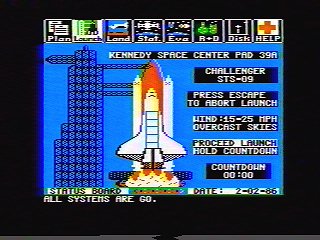 Once the station has research projects up and running, scale back on shuttle launches, restricting yourself to once launch every two months unless an emergency demands a hastily rescheduled rescue launch. Use the less frequent launches to carry always-needed satellites and payload assist modules, as well as spare research packs, to the station. Once the cargo is transferred, get the shuttle back to the ground again. The longer it remains in orbit, the more it costs.
Once the station has research projects up and running, scale back on shuttle launches, restricting yourself to once launch every two months unless an emergency demands a hastily rescheduled rescue launch. Use the less frequent launches to carry always-needed satellites and payload assist modules, as well as spare research packs, to the station. Once the cargo is transferred, get the shuttle back to the ground again. The longer it remains in orbit, the more it costs.
Space debris can be a hazard…but unless it’s within one or two “screens” of the station or a shuttle, don’t waste fuel and operations funds to dispose of it.
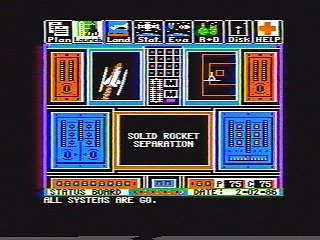 Once research has begun on the station, scale back the module budget, concentrating instead on planning (required for launch scheduling), operations, and hardware (required for revenue-generating satellites and payload assist modules, as well as research packs).
Once research has begun on the station, scale back the module budget, concentrating instead on planning (required for launch scheduling), operations, and hardware (required for revenue-generating satellites and payload assist modules, as well as research packs).
Keep at least one station crew member free. If you have to remove someone from a research project everytime a pod needs to be taken outside for a satellite launch, it will stall the project, wasting time and money.
And on the subject of research projects, don’t be afraid to include someone whose field is not included in the project requirements – especially if that person’s biographical profile mentions 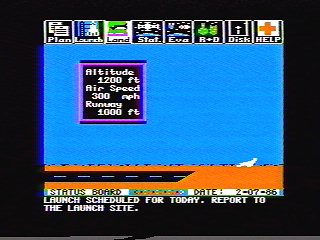 strong leadership or organizational qualities. Even if a geologist isn’t needed for a DNA study, he could bring much-needed order to the proceedings. But he could also have the opposite effect.
strong leadership or organizational qualities. Even if a geologist isn’t needed for a DNA study, he could bring much-needed order to the proceedings. But he could also have the opposite effect.
As you can see, there is a lot to this game. And that’s why it’s one of my favorites. I recently discovered my old Project Space Station floppy, loaded it on my trusty Apple IIc, and realized – some five hours later – that this was possibly the best game ever made for the Apple II series, certainly one of the most underrated, and that it was time to start an Apple archive for Phosphor Dot Fossils.
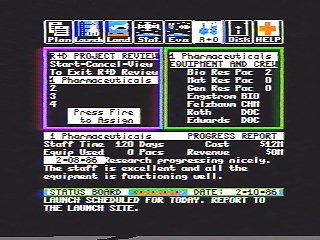 So, am I barking up the wrong tree? No, I don’t think so. I think the time is right for a complete reworking of Project Space Station. With games such as SimCity more popular than ever, a new version of Project Space Station could enjoy astronomical success (pun intended). Updated graphics, more
So, am I barking up the wrong tree? No, I don’t think so. I think the time is right for a complete reworking of Project Space Station. With games such as SimCity more popular than ever, a new version of Project Space Station could enjoy astronomical success (pun intended). Updated graphics, more  realistic basic assumptions in the structure of the simulation, and perhaps more options (such as giving the player the option to redirect the space program toward moon missions or interplanetary exploration), would make a new edition of Project Space Station a hit.
realistic basic assumptions in the structure of the simulation, and perhaps more options (such as giving the player the option to redirect the space program toward moon missions or interplanetary exploration), would make a new edition of Project Space Station a hit.
